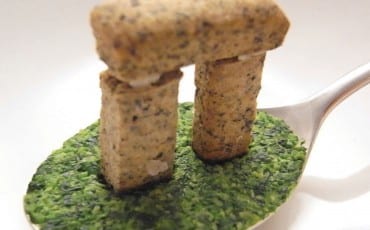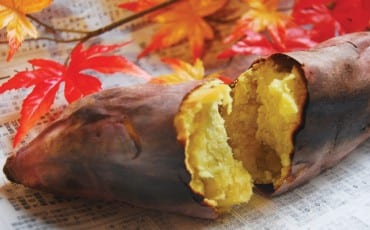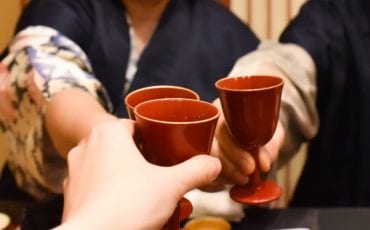Articles
Recipes
Jul 1, 2016
Let’s make dashi at home!
ABC Cooking Studio, which opened its first studio in Singapore in 2015, specialises in teaching people how to prepare Japanese cuisine. Here, one of its instructors, Reiko Dyke, gets us acquainted with the art of making dashi.
If Japanese cuisine is likened to a building, then dashi can be considered
its foundation. It forms the base for dishes such as chawanmushi (steamed egg), as well as soup dishes such as udon and soba.There are no hard and fast rules to making dashi, but it’s most commonly made with two ingredients: Konbu (Japanese sea kelp) and bonito flakes. Konbu is prized for its health benefits. It’s been shown to contain 46 minerals, 16 amino acids and 11 different vitamins.
For those who prefer a stronger fish flavour in their dashi, they may chose to add dried sardines and shiitake to the stock, while vegetarians may opt to make dashi using konbu alone or with dried shiitake.Ichiban dashi is the most common form of dashi, and it’s made using with kelp and bonito flakes alone. It’s an all-purpose stock you can use to prepare noodle dishes and much more.
Niban dashi is a lot less common these days, although it was used a lot a few decades ago as people didn’t want anything to go to waste. Made using the leftover kelp and bonito flakes from ichiban dashi, it results in a far more delicate, subtle flavour. Some restaurants may still opt to use niban dashi to make miso soup. However, it’s now almost completely obsolete in Japanese home cooking.”After you’ve made your dashi which, as you can see, is actually a rather straightforward process, why not try your hand at the two delicious recipes on the following page?
(Text DENISE LI)
Ichiban dashi (First dashi stock)
Ingredients
150 – 180cc water
3g dashi kelp
6g dashi bonito flakes
Directions
1. Brush away the stains on the surface of kelp. Cut the kelp against the grain several times. Soak it in water for 30 mins, then cook on low heat. Remove kelp right before it boils and let it continue to boil after that.
2. Turn off the heat, add bonito flakes. Heat again till the stock boils, turn down the heat and boil for 1-2 mins, skimming off the scum on the surface of stock in the process. Turn off the heat, then strain the stock.
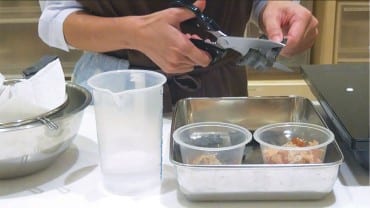
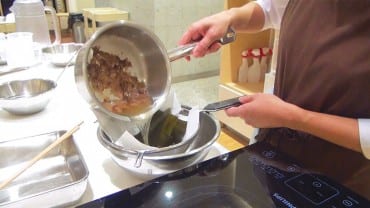
Niban dashi (Second dashi stock)
Ingredients
220 – 240cc water
All of the kelp and bonito flakes leftover from the ichiban dashi
2g Bonito flakes
Directions
1. Remove kelp and bonito flakes from the first dashi and put them into a pot. Add water, then put it on medium heat.
2. After boiling, put it on low heat and put the bonito flakes in. Cook for 5 minutes (skim off the scum on the surface if any). Turn off the heat and strain slowly.
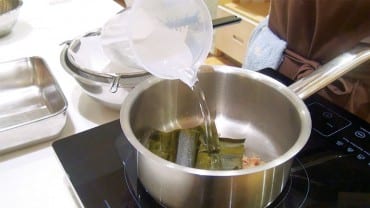
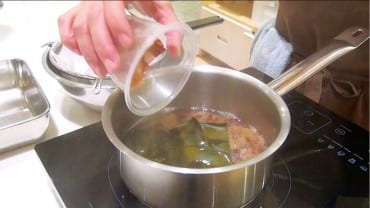
Japanese Western Fusion Cooked Rice
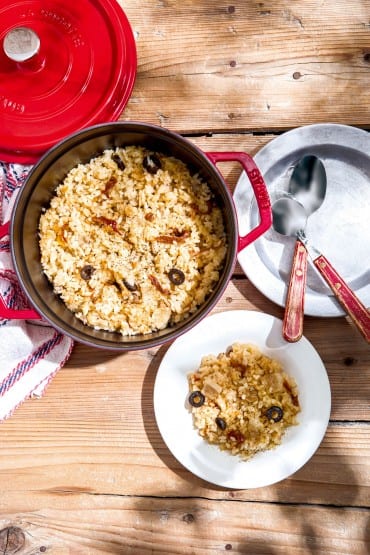 Ingredients ( 2 servings )
Ingredients ( 2 servings )
300cc rice
80 thin sliced pork belly (2cm in width)
Pinch of salt
Pinch of black pepper
120g chopped onions
20g dried tomatoes
4 black olives (seedless)
1 tbsp olive oil
1 tsp achovy paste
Half a garlic (minced)
1 and a half tsp soy sauce
1 tsp sake
300cc Ichiban dashi
Black pepper (appropriate amount)
Preparation
Soak the rice for over 30 minutes, then drain well. Marinate the meat with the salt and pepper
Soak the dried tomatoes in lukewarm water for 10 minutes. Then, shred it Sliced the black olives
Directions
1 Put the olive oil, anchovy paste, and minced garlic in a pot over low heat. Add in thin sliced pork belly when you the mixture becomes fragrant. Fry it with medium heat.
2. Add onion and dried tomatoes, and cook until onion turns tender.
3. Add rice. Put over low heat and fry for 1 minute. Then, add soy sauce, sake and ichiban dashi to the pot and boil it. Put the
lid on the pot. Turn to low heat once it has boiled, then cook for another 15 minutes. Turn off the heat and add black olives. Let it steam for 10 minutes.
4. Sprinkle black pepper to serve.
Winter Melon Soboroan
(Japanese stewed winter melon with edamame)
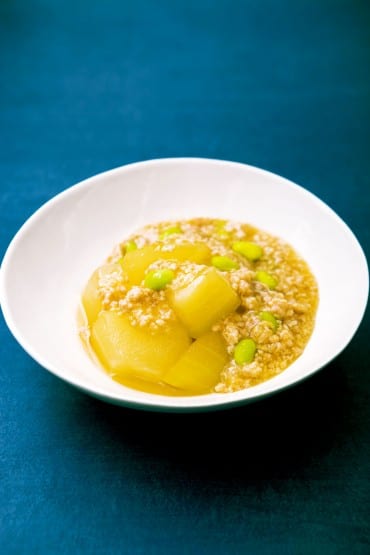 Ingredients (2 servings)
Ingredients (2 servings)
250g winter melon
[A] 200cc niban dashi
[A] Half tbsp mirin
[A] 2 tsp light soy sauce
[A] 1 tsp sake
80g chicken minced meat
[B] 80cc niban dashi
[B] Half tbsp light soy sauce
[B] 2 tsp mirin
[B] 1 tsp sake
[C] 2 tsp Potato starch
[C] 4 tsp water
Quarter tsp squeezed ginger juice 20g edamame (frozen)
Preparation
Soak the rice for over 30 minutes, then drain well. Marinate the meat with the salt and pepper Soak the dried tomatoes in lukewarm water for 10 minutes. Then, shred it Sliced the black olives
Directions
1 Put the olive oil, anchovy paste, and minced garlic in a pot over low heat. Add in thin sliced pork belly when you the mixture becomes fragrant. Fry it with medium heat.
2. Add onion and dried tomatoes, and cook until onion turns tender.
3. Add rice. Put over low heat and fry for 1 minute. Then, add soy sauce, sake and ichiban dashi to the pot and boil it. Put the
lid on the pot. Turn to low heat once it has boiled, then cook for another 15 minutes. Turn off the heat and add black olives. Let it steam for 10 minutes.
4. Sprinkle black pepper to serve.
Recipe and photos contributed by 
ABC Cooking Studio has 135 studios currently operating in Japan. The studio provides cooking, bread, cake, wagashi (traditional Japanese confectionery) making classes in a comfortable and relaxed environment.In May 2016, after celebrating its first year anniversary, the ABC Cooking Studio Singapore received the Singapore Enterprise Medal of Honour Top 100 SMEs 2016.
www.facebook.com/abccooking.sg







